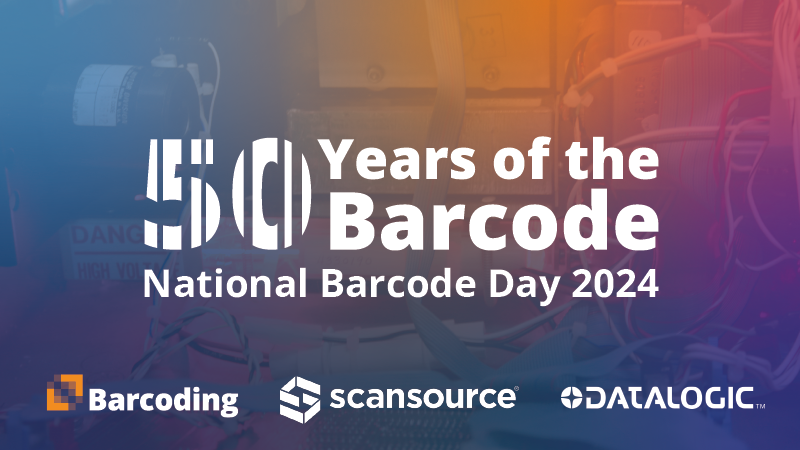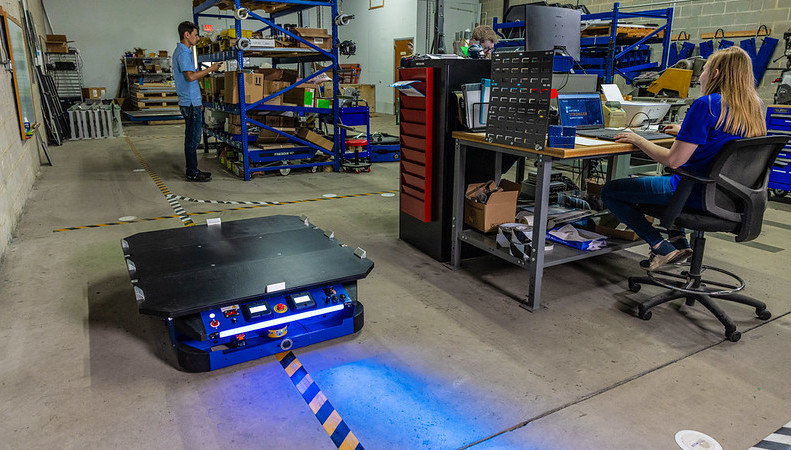The pandemic has shaken up the supply chain, making it much more complex – but also opening up opportunities for greater efficiency and new technology applications. Our May Huddle, “What’s Next with Enterprise Mobility,” took a deep dive into trending technologies, how to solve some post-COVID supply chain issues, and ways to make the supply chain operate more efficiently.
If you attended the Huddle, you know how informative it was–and if you were unable to join, you’re in luck: Below is a recap of the discussion!
FEATURED SPEAKERS
- Jody Costa, Barcoding VP of Marketing & Strategic Partnerships
- Scot Stelter, Honeywell’s Director of Marketing for Mobility Products
- Stan Zywicki, Honeywell’s Director of Product Management for Enabling Software
- Peter Zalinski, Barcoding’s Director of Partner Solutions
Question: “What’s permanent and lasting change when it comes to mobile data collection?”
The pandemic created major disruptions around the world, and of course had an enormous impact on our supply chains.
- The core of our economy is the retail supply chain, and the pandemic spurred several changes: ecommerce accelerated and grew, crossing into new demographic groups–Boomers, for example, are doing much more buying online
- Another expansion was across categories: While apparel was once the biggest category for online shopping, the pandemic was the impetus for grocery, DIY, and other categories to surge
- Because nearly every retailer is delivering goods today, they have to be investing in new software, hardware, and brainpower to make it happen. Additionally, a whole new infrastructure (think of things as basic as curbside parking spots) is needed to transition from brick-and-mortar to delivery and pickup
- Stocking for and satisfying the customer must become more efficient, and the industry needs to learn alternative ways to improve security, efficiency, and the customer experience. One way they’re improving them is through enterprise mobility. While once a sort of “special-purpose tool,” it’s now a generic power tool that enables employees. Today, every employee can (and should) be using a device to execute tasks; in doing so, organizations can do more with less overhead. However, not just any device will do: companies need to invest in durable, stable, secure hardware and systems
- Some organizations will use consumer devices, but there are drawbacks: high support costs, obsolescence, and others
Question: “What are things to think about if I’m planning for the future of enterprise mobility?”
- Make sure your technology is future-proof. Prioritize building on a stable, durable platform that can deliver hardware and software longevity
- Don’t be distracted by 5G: If you have 4G devices now, 5G will likely deliver no added value. Unless the unique attributes of 5G (low latency, high throughput) allow you to do more things, most organizations don’t need it yet
- Save time and money by leveraging experts in mobile device management. They’ll make sure security is always updated, and eliminate the need for you to get all your devices to a depot for maintenance/updates
Question: “What can we expect from AI in the near future?”
Artificial intelligence (AI) is in everything today, and thankfully some of the major technology challenges using it have been solved. AI has gone from something out of reach for most companies to a commercial reality that’s accessible to most; in fact, there are advanced AI engines in most every smartphone on the market. Advanced AI will actually “sense” environments, helping organizations do things like determine if their companies are planogram-compliant by reading not just barcodes, but package designs and human-readable copy using OCR. Soon, we’ll be able to talk to computers–and we won’t need Siri-like cloud bandwidth to do it!
Notable quote: “In five years you will not recognize what we’re doing (with mobility) compared to what we’re doing now. Things will be so much more than just transactional.” – Scot Stelter
Question: “How does security differ between Android and Windows?”
Security is a huge concern for everyone in the industry, and one that just becomes more urgent every day. The way security is managed by Android and Windows is very different: Android builds its platforms on all prior versions, making it continually compatible–there’s no need to rip and replace devices when a new version comes out. Windows, on the other hand, releases new versions that aren’t typically supported beyond a single patch. The Android approach is not just simpler and far more secure, but decreases the time and cost needed to maintain old devices.
Notable quote: “Moving to Android also improves productivity and makes training easier. Onboarding employees using Android versus a more traditional green screen method reduces time from an average of 58 days to 14!”–Scot Stelter
Question: “What can we look forward to from Android?”
The Android platform is always evolving, and in the near future we can expect to see enhancements to software tools and APIs and STKs; we’ll also see tools being simplified and expanded. Most importantly, we’ll receive more insights from the data, enhanced security, and new devices with added functionality.
Thank you!
Thanks to everyone who was part of the May Huddle. Barcoding and Honeywell are eager to help you navigate the post-COVID supply chain world, so if the conversation sparked questions about or interest in the solutions available to you, please reach out – just click the link below to get started!
We’ll be sharing information soon about our next Huddle, so stay tuned. In the meantime, watch the recording below to learn more!
Schedule a Consultation!

.jpg)



